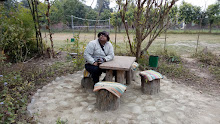Ipomoea aquatica
COMMON NAME: Water Morning Glory, Swamp cabbage, aquatic morning glory, Chinese water spinach, River spinach
BOTANICAL NAME: Ipomoea aquatica
FAMILY: Convolvulaceae ((Morning glory family)
DESCRIPTION:
Water Morning Glory is a semi-aquatic tropical plant grown as a leaf vegetable. Its precise natural distribution is unknown due to extensive cultivation, with the species found throughout the tropical and subtropical regions of the world. Water Morning Glory grows in water or on moist soil.
LEAF: The leaves vary from typically sagittate (arrow head-shaped) to lanceolate, 5–15 centimetres (2–6 in) long and 2–8 centimetres (0.8–3 in) broad.
STEM:- Its stems are 2-3 m or more long, hollow, allowing them to float, and these root at the nodes. They are hollow and can float.
FLOWER: The flowers are trumpet-shaped, 3-5 cm diameter, usually white in colour, with a purple center. The flowers can form seed pods which can be used for planting.
USES OF PLANT:-
(1) Medicinal uses: Studies conducted with pregnant diabetes-induced rats have shown a blood sugar lowering effect of Ipomoea aquatica by inhibiting the intestinal absorption of glucose.
(2)Ipomoea aquatica is a semiaquatic, tropical plant grown as a leaf vegetable.The vegetable is a common ingredient in Southeast Asian dishes. In South India, the leaves are finely chopped and mixed with grated coconut to prepare thoran, a dish in Kerala. The same dish in Tamil Nadu is prepared as thuvaiyal or as kootu.
HAZARD:- The plant when eaten raw may transmit Fasciolopsis buski, an intestinal fluke parasite of humans and pigs, causing fasciolopsiasis.
INVASIVE SPECIES:- It has been introduced to the United States, where its quick growth rate has caused it to become an environmental problem, especially in Florida and Texas. It has been officially designated by the USDA as a "noxious weed". In Sri Lanka it invades wetlands. Its floating, long stems form dense mats which can block the flow of water and prevent passage.
SOURCES:
(1) http://en.wikipedia.org/wiki/Ipomoea_aquatica
(2) http://www.missouribotanicalgarden.org/PlantFinder/PlantFinderDetails.aspx?kempercode=b142
(3) http://www.flowersofindia.net/catalog/slides/Water%20Morning%20Glory.html

%5D+ban+tulsi.JPG)










0 comments:
Post a Comment